Pretty as a Picture | Juniper Hill Farm in Francestown, New Hampshire
A garden photographer’s garden offers a master class in composition. Tour Joseph Valentine’s Juniper Hill Farm in Francestown, New Hampshire.
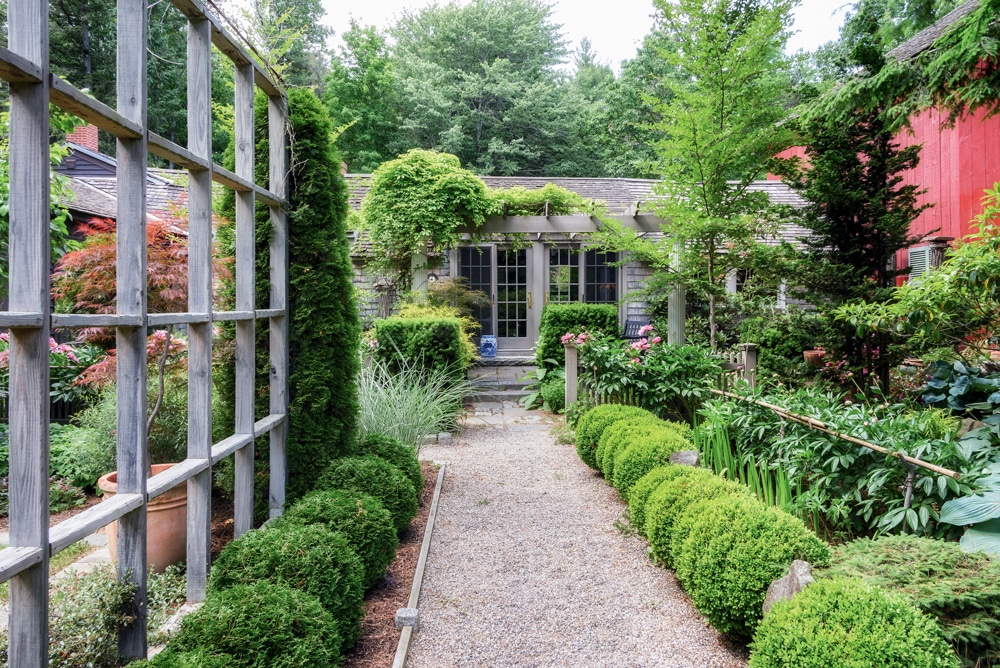
Coffee By Design | Portland, Maine
Photo Credit : Katherine Keenan
Photo Credit : Joseph Valentine
Francestown, New Hampshire, can feel like a village that time forgot. Main Street is classic New England, with its Capes and colonials and old meetinghouse fronting the green, but the surrounding countryside is also riddled with meandering roads, dirt and paved, that beg you to drive off the map and into another era.
I duck down one of these lanes, dappled sunlight filtering through a canopy of maple and oak leaves, the driveway only as wide as my car. It is fringed with hay-scented ferns and hemmed in by craggy stone walls.
“This was the old coach road from Greenfield to Francestown,” explains Joseph Valentine, greeting me at the end of the drive. His gaze takes in the view of Juniper Hill Farm, once 600 acres, now 30. Fields spread out around us, sheep graze, and a c. 1789 dark-brown half-gambrel hunkers over the land, just as it has since George Washington was president. “Typical New England architecture, they kept building on,” he says. “It was so functional. You could go from the house to the barn to feed the animals in wintertime without ever going outside.”
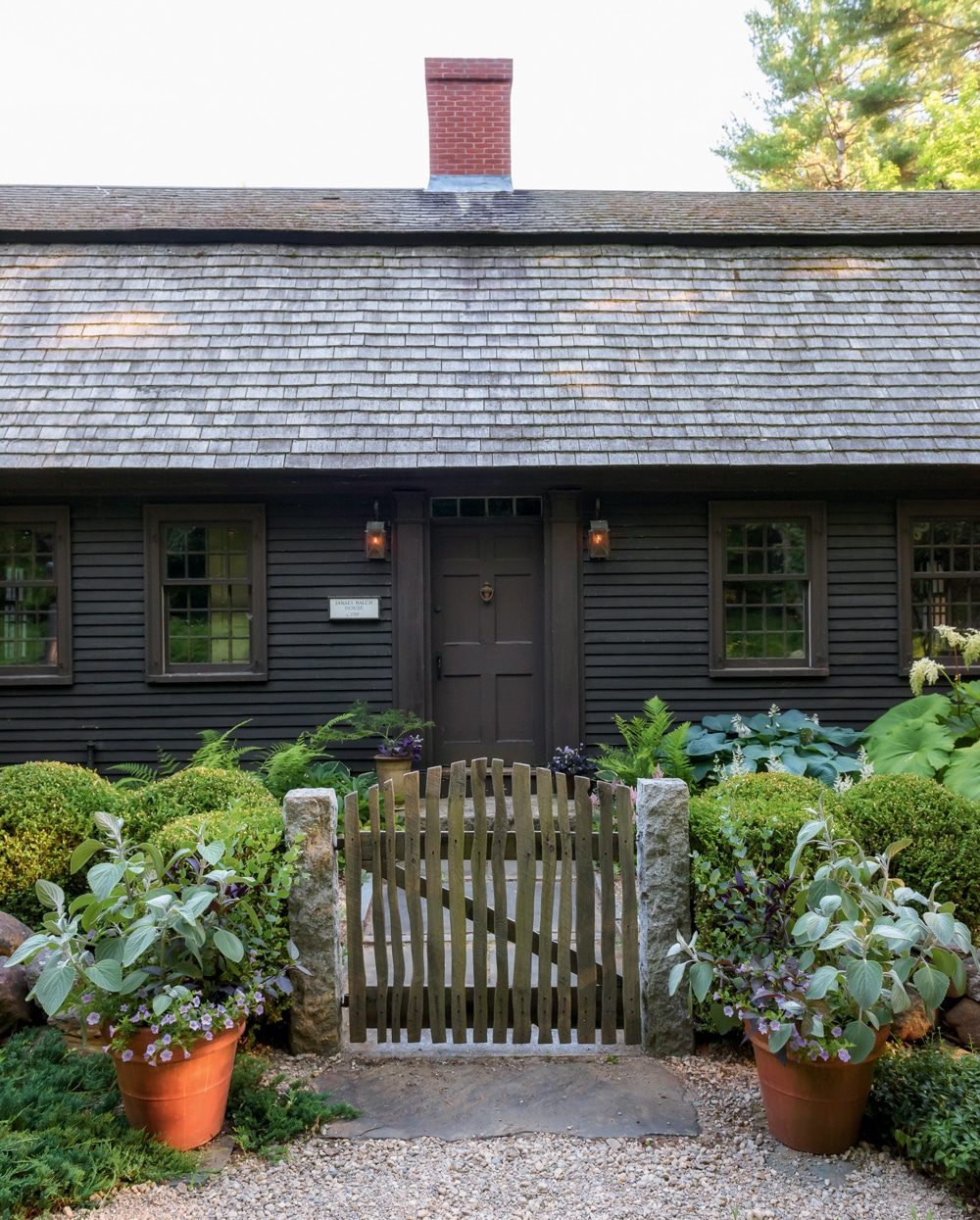
Photo Credit : Joseph Valentine
But outside is where we’ll be. It’s the gardens I’ve come for, nearly two acres, ringing out from the house like ripples. They’ve been expanding since 2000, when Joe and his wife, Paula, made this weekend retreat their full-time home—he, a retired research psychologist about to turn serious photographer; she, the executive director of the Mojaloop Foundation, an offshoot of the Bill and Melinda Gates Foundation. For the past 20 years, Joe has honed his artist’s eye, photographing gardens in the U.S. and in Europe for publications throughout the world—all while learning, planting, and creating in his own backyard.
It is a garden photographer’s dream.
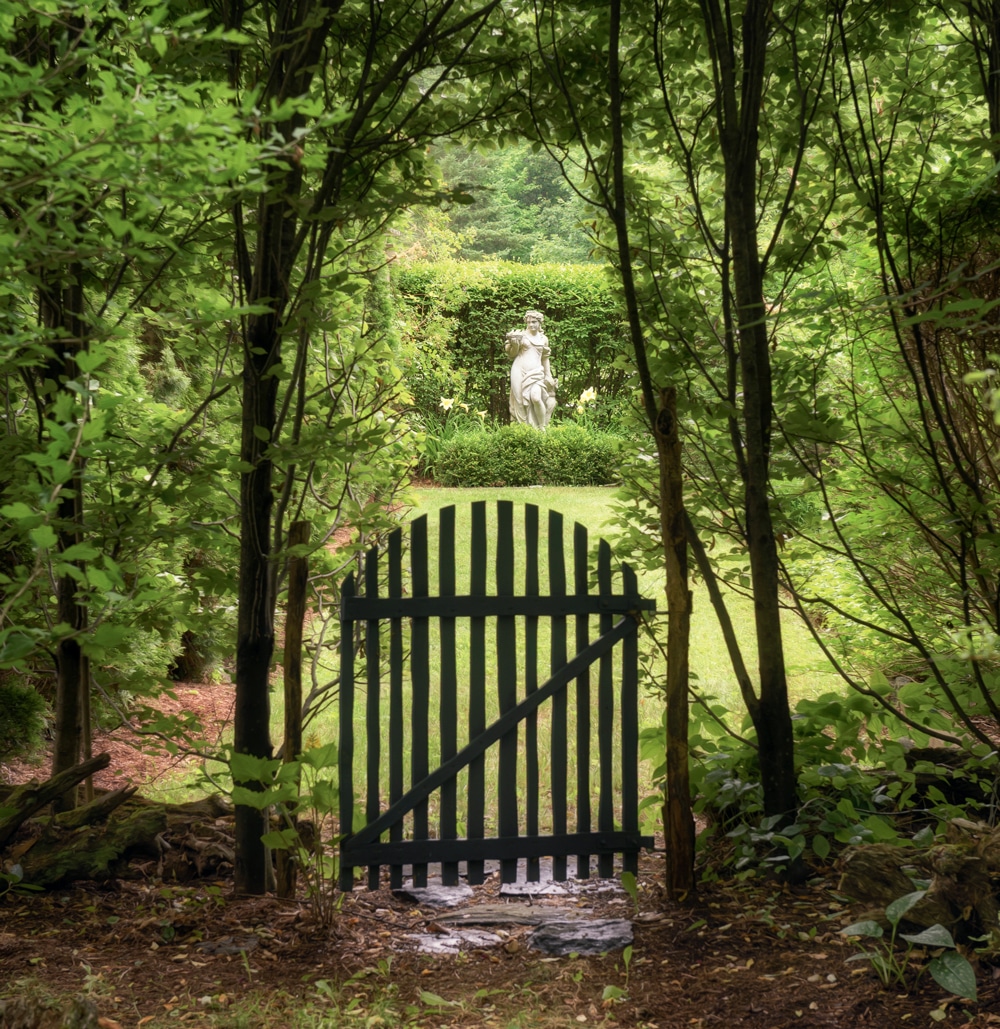
Photo Credit : Joseph Valentine
“For me it was like a succession of garden rooms that I built out,” he says. “We started at the house with a little courtyard garden, then added sequentially. If you’ve got a flat space, like we do here, you can create surprise and interest by making rooms. You don’t see the whole garden in one take.”
We ease in, starting at the “transitional” garden, wedged between the meadow and the more formal hedged gardens. It’s a tangle of native plants—bee balm, rudbeckia, Queen Anne’s lace. “We just let things self-seed here. The butterflies love it.” A rustic clothesline and a weathered woodshed pull us onward. Details have impact: terra-cotta pots nailed to the shed’s peak are half hidden by the leaves of an espaliered Bartlett pear tree. I remind myself to look back as well as ahead. There are still lifes everywhere.

Photo Credit : Joseph Valentine
Paula, who does the container and raised-bed gardening (“we meet in the middle with perennials”), joins us; the couple’s corgi, Christina, jumps in as adjunct tour guide. A garden is a living thing, always evolving, plants and plans shifting like the weather. The former Potager, overlooking the grazing sheep, is being seeded back to grass, its raised vegetable beds moved closer to the house, where Paula can tend them more easily. A quick turn inland from the fields, and we encounter the Stumpery, a small woodland garden that sprouts actual stumps, twisted and sculptural, rescued from a nearby garden center, alongside a living corkscrew willow.
There is no hint of the 30-year-old pool until we round a corner. Sheltered and serene, it is cloaked by a boxwood hedge, planted to shield its bright blueness from the house. “The pool was here well before we came,” says Paula, who likes to swim in the evening. “It’s held up nicely.” The perimeter is edged with graying teak benches and tables festooned with red umbrellas. Planters made of hypertufa (a composite concrete mix) spill over with rosy Supertunias. At one end, Joe has built a tiny pool house “folly,” modeled after the gazebos at Hidcote Manor Garden in England. “We copied the measurements and roof style,” he says, nodding toward the swooping, pointed top. “There’s a guy in town who helped me—the roof was a bit above my pay grade,” he admits with a grin.

Photo Credit : Joseph Valentine
In the gentle Faun Garden, a Japanese maple is the dominant element, plus an old, unidentified crabapple. But along the way there are details to absorb, each its own kind of quiet meditation: a granite millstone set at an intersection, a clump of birch stumps topped with terra-cotta pots (“for ‘pots-erity,’” says Paula), a blushing ‘Quick Fire’ hydrangea that’s a great performer and an early bloomer, morphing from pink to almost red by the end of August.
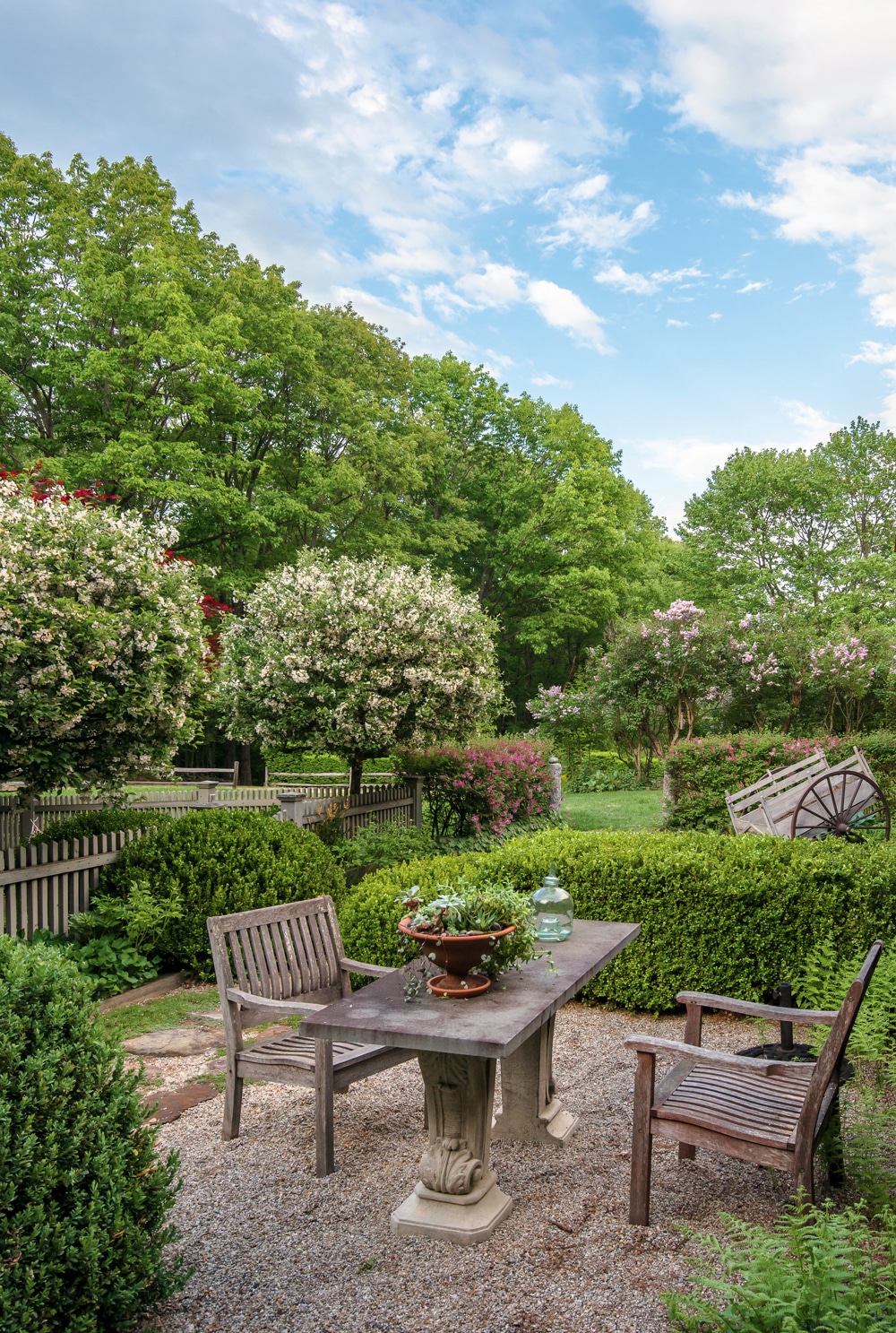
Photo Credit : Joseph Valentine
Joe points out a “wall” in the Zen Garden, copied from one at Sakonnet Garden in Little Compton, Rhode Island. The large rectangular grid frames the landscape beyond, the way a picture window would, but suddenly you’re looking at the garden in a whole new way. “That’s the whole object,” he says. They plan to do some rearranging in here, based on ideas gleaned from Asticou Azalea Garden on Mount Desert Island, Maine.
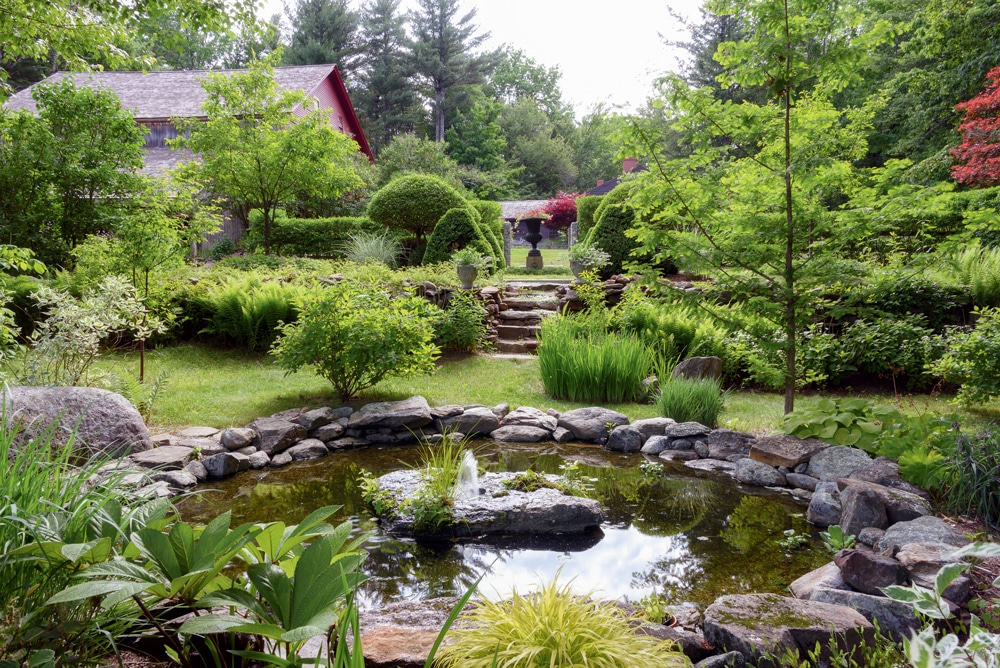
Photo Credit : Joseph Valentine
We move on to the pergola, swathed in chocolate vine, a fast grower that’s covered with deep-burgundy flowers in the spring. Crushed-stone pathways ebb and flow in all directions, and I glimpse more of Joe’s handiwork: a barn-red garden gate, and another in a brilliant shade of periwinkle. Here is where deep artistry comes in—making sure that transitions work in every direction. I covet a small antique stone owl, worn by weather, perched on a granite post.
There is the Land of Broken Pots garden. So many lilacs: Tinkerbelle, and an enormous Miss Kim hedge. Split rail fences that Joe split himself. A mossy water garden, with Palibin lilacs and plants gifted from garden friends.
And there’s another little building that Joe completed the day before their last Garden Conservancy Tour. “It’s a replica of Prince Charles’s temple at Highgrove House—the one in his woodland garden,” he says. “You can’t take photos when you’re there, so I kind of figured out the dimensions by looking at photos.” We survey the rustic columns, the tangle of juniper branches decorating the peak, the view to the stone-ringed pond. “He’s got a much more beautiful bench inside,” Joe says. “Probably the King of Tibet gave it to him,” Paula remarks. With its weathered grace, I’ll take Joe’s temple any day. It seems the perfect place to sit and ponder it all, to reflect back on the early days, on that first small garden.
And really, it started so simply, when the famous author and garden designer Gordon Hayward paid them a visit. “Gordon’s a good friend of ours,” Joe says. “I asked him, ‘What would you do with that little area near the house?’ He took out his doodle pad, sketched for a moment, and said, ‘I’d do this!’”
Joe shakes his head. “Gordon always lays claim to getting us started, which is true! And maybe I should have stopped right there. But you know the problem—if you’re a creative person, you enjoy the creative part. That’s the fun of it. But you should know when to stop.”
His eyes get a faraway look. “Still … if I could maintain it … I’d make another garden.”
_New England Gardens That Inspire Joseph Valentine
Arnold Arboretum: Designed by Frederick Law Olmsted, this 281-acre landscape boasts one of the world’s most comprehensive collections of temperate woody plants, in the heart of New England’s biggest city. Boston, MA; arboretum.harvard.edu
Coastal Maine Botanical Garden: Seventeen acres of gardens (set amid 295 total) feature native plants and others suited to northern coastal conditions. There’s also a café serving delicious lunches (often lobster), and a garden shop for mementos. Boothbay, ME; mainegardens.org
The Garden Conservancy: The conservancy’s Open Days program allows entry to spectacular private gardens that would normally be off-limits to visitors. A handful of areas to consider: Litchfield, CT; Monadnock Region, NH; Nantucket, MA. gardenconservancy.org
Hollister House: This American interpretation of such classic English gardens as Sissinghurst, Great Dixter, and Hidcote is formal in its structure but informal and exuberant in its style of planting. Washington, CT; hollisterhousegarden.org
Mount Desert Island Gardens: Asticou Azalea Garden, Thuya Garden, and Abby Aldrich Rockefeller Garden are as notable for their creators as their plantings. Beautiful displays of mixed borders, Japanese-inspired rooms, and moss-covered woods make this trio perfect for an outing along the rocky vistas of Seal Harbor. Mount Desert Island, ME; gardenpreserve.org
Tower Hill Botanic Garden: Discover four-season displays of the finest plants for cultivation in New England, from ornamental to edible to native. Trails enhance the natural features of this 171-acre property, which is a great place to see mature plantings resilient to our climate. Boylston, MA; towerhillbg.org





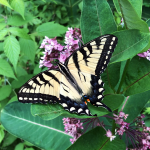
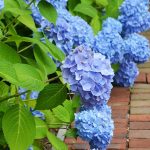

Do they host weddings???
Hi Angela, sorry but we do not host weddings.
I more than enjoyed Joes gardens l live in the California desert to see all that green and flowers were something to lift ones spirits thank you ❤️
Can you visit the farm, if so where do I get the info and cost.